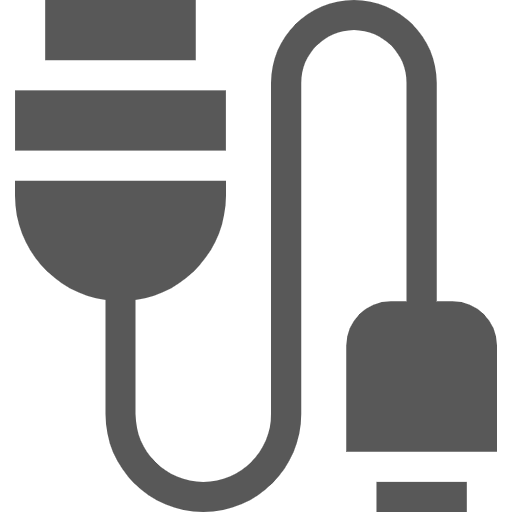In today’s fast-paced industrial landscape, the need for efficient and reliable machinery is paramount. Unplanned downtime can lead to significant financial losses, making it essential for organisations to adopt proactive maintenance strategies. One such strategy that has gained traction is Electrical Signature Analysis (ESA). This innovative technique is transforming how industries monitor equipment health, enabling early fault detection and enhancing operational efficiency. In this article, we will delve into the intricacies of ESA, its working principles, benefits, applications, and its pivotal role in predictive maintenance.
Understanding Electrical Signature Analysis (ESA)
Electrical Signature Analysis is a sophisticated, non-invasive diagnostic method that focuses on monitoring the electrical signals of machinery. By analysing parameters such as current and voltage, ESA can identify subtle changes in equipment performance that may indicate potential faults. Unlike traditional maintenance approaches that rely on scheduled inspections or physical checks, ESA offers continuous monitoring, allowing for real-time data analysis and early detection of issues.
The Evolution of ESA
The origins of ESA can be traced back to the development of Motor Current Signature Analysis (MCSA) in the mid-1980s. Initially designed for monitoring motor-operated valves in nuclear power plants, this technique has evolved significantly over the years. By the 1990s, ESA expanded its capabilities to include voltage and power monitoring, making it applicable to a broader range of machinery, including pumps and compressors. Today, advancements in technology, such as the integration of the Industrial Internet of Things (IIoT) and artificial intelligence (AI), have further enhanced ESA’s effectiveness in predictive maintenance.
How ESA Works
The operation of ESA can be broken down into two primary stages: data capture and data analysis.
Data Capture
The first step involves the installation of sensors in the motor control cabinet, where they continuously monitor high-frequency electrical data. This non-intrusive approach allows for the collection of vital information without the need for direct access to the machinery. The sensors are designed to withstand harsh environments, ensuring safety and ease of installation.
Data Analysis
Once the electrical data is captured, advanced algorithms, including Fast Fourier Transform (FFT), are employed to analyse the information. This analysis converts time-domain data into the frequency domain, revealing the machine’s frequency signature. By identifying deviations from the baseline signature, ESA can detect potential faults before they escalate into serious issues.
The Advantages of Electrical Signature Analysis
ESA offers numerous benefits that make it an invaluable tool for modern industries. Here are some of the key advantages:
Early Fault Detection
One of the most significant benefits of ESA is its ability to detect faults at an early stage. Traditional maintenance methods often overlook subtle signs of wear or misalignment, leading to unexpected breakdowns. ESA, however, can identify minor anomalies, allowing maintenance teams to address issues proactively.
Cost Efficiency
Unplanned equipment failures can result in costly repairs and production delays. By enabling early detection of faults, ESA helps organisations avoid these expenses. This proactive approach not only reduces repair costs but also extends the lifespan of machinery, leading to substantial long-term savings.
Enhanced Equipment Reliability
Reliability is crucial for maintaining productivity in any industry. ESA contributes to improved equipment reliability by ensuring that machines operate within optimal parameters. Continuous monitoring allows for timely interventions, minimising the risk of unexpected failures.
Non-Intrusive Monitoring
Unlike traditional maintenance techniques that require equipment shutdown for inspections, ESA allows for real-time monitoring without interrupting operations. This non-intrusive nature enhances productivity and reduces downtime, making it an attractive option for industries with high operational demands.
Data-Driven Maintenance Strategies
ESA provides valuable insights into the condition of machinery, enabling organisations to develop data-driven maintenance strategies. By analysing trends and patterns in electrical data, maintenance teams can focus on actual equipment conditions rather than relying on arbitrary schedules. This shift from reactive to proactive maintenance significantly enhances efficiency and resource management.
Applications of Electrical Signature Analysis
ESA has a wide range of applications across various industries, including:
Manufacturing
In manufacturing environments, ESA is used to monitor motors and conveyors, detecting issues such as rotor imbalances and bearing wear. By addressing these problems early, manufacturers can prevent costly production delays and extend equipment lifespan.
Energy and Utilities
Power plants utilise ESA to monitor generators, transformers, and power systems. Early detection of faults, such as stator winding insulation issues, helps maintain operational efficiency and reliability.
Oil and Gas
In remote and hazardous environments, ESA is invaluable for monitoring pumps and compressors. By identifying issues like cavitation or stray bearing currents early, ESA reduces downtime and enhances safety.
Transportation
Rail networks and transit systems rely on ESA to keep electric motors in optimal condition. By detecting overheating or misalignment in motors, ESA ensures passenger safety and prevents costly service disruptions.
Water Treatment
In water and wastewater facilities, ESA monitors pumps and motors to ensure uninterrupted operation. Its ability to detect flow inefficiencies or cavitation supports consistent service delivery in critical public utilities.
Challenges in Implementing ESA
While ESA offers numerous advantages, organisations may face challenges when implementing this technology. Some of the key challenges include:
Need for Specialised Knowledge
Deploying and interpreting ESA effectively requires specialised knowledge. Without proper training, teams may struggle to utilise its advanced fault detection capabilities.
Upfront Costs
The initial investment for sensors, hardware, and integration can be a hurdle, particularly for smaller businesses. However, these costs are often offset by the long-term savings achieved through reduced downtime and maintenance expenses.
Data Management
Managing large volumes of high-frequency data necessitates efficient tools to avoid missing critical insights. Organisations must invest in data processing capabilities to maximise the benefits of ESA.
Integration with Existing Equipment
Integrating ESA with older or varied machinery can pose challenges. Additional resources may be required to ensure compatibility, particularly in facilities with legacy systems.
Resistance to Change
Organisations may encounter resistance to adopting new technologies, as teams may prefer familiar methods. Overcoming this resistance is crucial for realising the full potential of ESA.
Getting Started with Electrical Signature Analysis
Embarking on the journey of implementing ESA can be simplified by following a structured approach:
Define Monitoring Goals
Establish clear objectives for what you aim to achieve with ESA. Whether it’s detecting specific faults or monitoring overall equipment health, having defined goals will guide your implementation.
Develop an Implementation Plan
Create a detailed plan outlining how ESA will fit into your existing operations. Consider factors such as sensor placement, data collection, and analysis processes to ensure a smooth rollout.
Choose the Right Supplier
Selecting a reliable ESA system supplier is crucial for successful implementation. Look for a provider with industry experience and strong support services to facilitate the integration process.
Ensure Seamless Integration
Your ESA system should integrate effortlessly with your existing infrastructure. Collaborate with your supplier to address compatibility issues and ensure a smooth transition.
Train Your Team
Equip your team with the necessary knowledge to effectively utilise ESA. Providing tailored training will empower them to interpret data and take appropriate actions based on insights gained.
Comparing ESA with Other Condition Monitoring Techniques
ESA stands out among various condition monitoring techniques due to its unique advantages. Below is a comparison of ESA with vibration analysis and thermal imaging:
| Feature | Electrical Signature Analysis (ESA) | Vibration Analysis | Thermal Imaging |
|---|---|---|---|
| Monitoring Method | Non-intrusive, based on electrical data | Intrusive, based on physical vibrations | Non-intrusive, based on surface temperature |
| Data Type Analysed | Current and voltage signals | Vibration signals | Infrared heat signatures |
| Faults Detected | Electrical and mechanical issues | Primarily mechanical faults | Overheating and thermal imbalances |
| Sensor Placement | Sensors in motor control cabinet | Sensors placed directly on equipment | Requires line-of-sight access |
| Remote Monitoring | Highly suitable for inaccessible locations | Limited due to sensor placement | Limited, requires direct access |
| Detection Timing | Early detection of faults | Intermediate detection | Intermediate detection |
| Scalability | High, easily scalable across multiple assets | Moderate, requires sensors on each asset | Low, manual inspections limit scalability |
| Integration with IIoT | Highly compatible | Moderately compatible | Low compatibility |
| Cost of Implementation | Moderate to high | Moderate | Low to moderate |
Future Trends in Electrical Signature Analysis
The future of ESA is being shaped by technological advancements and the increasing demand for reliability and efficiency in industrial operations. Key trends include:
Integration with AI and Machine Learning
The incorporation of AI and machine learning into ESA is enhancing its predictive capabilities. These technologies enable more accurate fault detection and provide actionable insights for maintenance teams.
Enhanced Sensor Technology
Advancements in sensor technology are making ESA more robust and precise. Improved sensors can operate effectively in harsh environments, ensuring reliable performance.
Centralised Data Processing
Centralised data processing and advanced algorithms are streamlining diagnostics and enhancing fault detection accuracy. This allows for quicker responses to potential issues.
User-Friendly Interfaces
The development of intuitive user interfaces is making ESA more accessible across industries. These advancements facilitate easier interpretation of data and quicker decision-making.
Electrical Signature Analysis is revolutionising predictive maintenance by offering a proactive approach to equipment management. Its ability to detect faults early, enhance reliability, and reduce costs makes it an essential tool for modern industries. As organisations continue to embrace ESA, they will benefit from improved operational efficiency and sustainability. By investing in this innovative technology, businesses can position themselves for success in an increasingly competitive landscape.
If you are interested in learning more about how Electrical Signature Analysis can transform your operations, feel free to reach out for further information.











